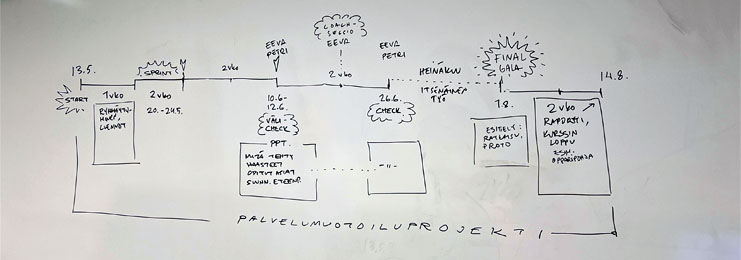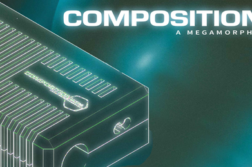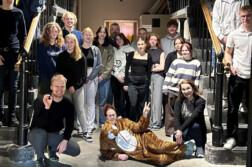During the summer of 2024, we organized a course about service design. The course was open to all students of Häme University of Applied Sciences (HAMK). During the course, students familiarized themselves with different service design methods and practices through lectures, assignments, and a project. Our sponsor was the service center Sampola in Hämeenlinna. Sampola is part of the Impaired Hearing Service Foundation in Finland and offers activities and working possibilities to the hearing impaired. They gave the students a mission to solve Sampola’s challenges with visibility and recognition.
The course kicked off with a week of lectures and assignments about service design methods. During that week, the students formed groups in which they would be working through the summer with their project. The lectures were held by HAMK Design lecturer Petri Salo, who provided knowledge on the subjects of service design methods such as co-creation, space, strategy, and story-based service design.
After a week of lectures, we started the design sprint week, which is a Design Thinking process squeezed into a week. Meaning that one day of the week is one step of the design thinking process. The first day was used to empathize with the problem given by Sampola, the next day to define the problem, and so on. Especially this week, my expertise came to use as I am experienced with the process of Design Thinking and product development due to my background in design and having been part of the Design Factory staff for two years.
Sampola also has a shop in which they sell items made from recycled materials by the customers of Sampola, such as canvas bags, but the problem is, that not many – even in Hämeenlinna – seem to know about them. They gave us the mission to make Sampola better known around the Kanta-Häme region and make them more approachable.
As for the final step of the Design Thinking process, testing, this was difficult to complete in such a short period. The final step of the week was to present the progress and ideas the groups had made to the representative of Sampola while we visited their open house day. The teams had a lot of ideas on how to make Sampola more known and approachable to the citizens of Hämeenlinna. They had ideated crafting workshops, developing Sampola’s website and a better social media presence. The representative of Sampola, Kimmo Uschanoff, was amazed and excited about the students’ work and ideas, and that also inspired the students to pursue those innovations and take them even further.
After the design sprint, we set the groups to work independently with the feedback they got from Sampola and us, the teaching team. Each group dove deeper into the research and development of their ideas. The students utilized the tools and methods they had learned at the beginning of the course, conducting thorough market research, user interviews, and small-scale experiments to test their concepts.
At the Final Gala, on August 13th, we had four groups presenting their work and innovations to Kimmo Uschanoff from Sampola, us staff, and a few teachers from another department. All teams successfully developed impactful projects that addressed Sampola’s need for greater visibility and community engagement. Team Diversified created practical solutions like redesigning the website and marketing materials and enhancing Sampola’s brand presence. Team Coffee Break focused on understanding community engagement through surveys and interviews, resulting in various promotional prototypes, such as social media materials, video scripts, and even a comic book drawn by one of the team members. Team BSM2T designed a workshop model to directly involve residents with Sampola, offering actionable steps for ongoing community integration, such as building birdhouses or making candles. The last group, Team Rasberry, did not do their service design project for Sampola, but rather figured out a problem by themselves and wanted to solve that. They developed a circular economy game for elementary schools, aligned with EU and HAMK objectives, demonstrating thorough research and creating an advanced prototype of the game. Collectively, the projects were well-received, providing Sampola with innovative, feasible strategies to increase awareness and involvement within the community.
At HAMK, we would be enthusiastic to continue our collaboration with Sampola in the future. Our IT and ICT teachers would be excited to have Sampola as a client for their upcoming Design Factory project. This continued collaboration could enable us to explore technological solutions, enhance Sampola’s digital presence, and develop new strategies to help them grow and thrive in the community. We look forward to the ongoing exchange of ideas and the opportunity to contribute to Sampola’s mission in meaningful ways.
Author
Eeva Hirvinen, teaching assistant, HAMK Design Factory




